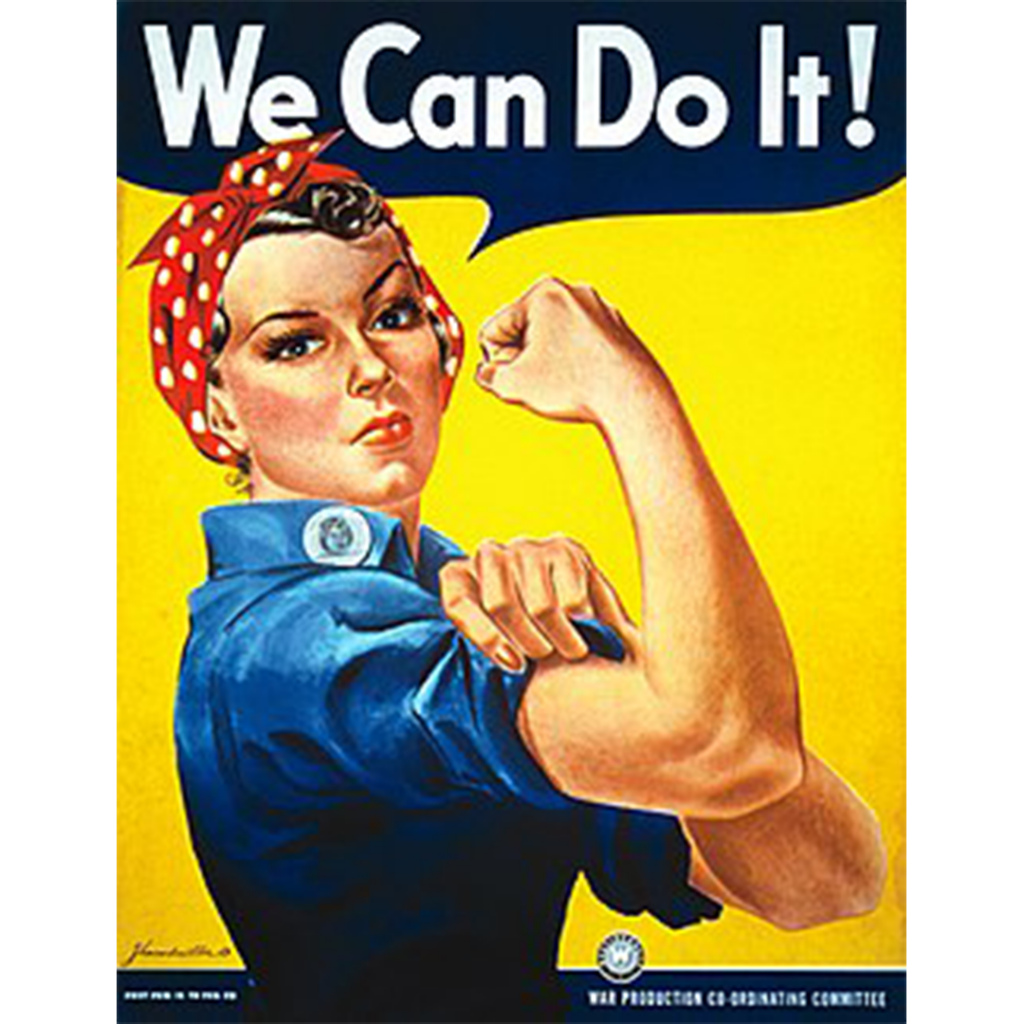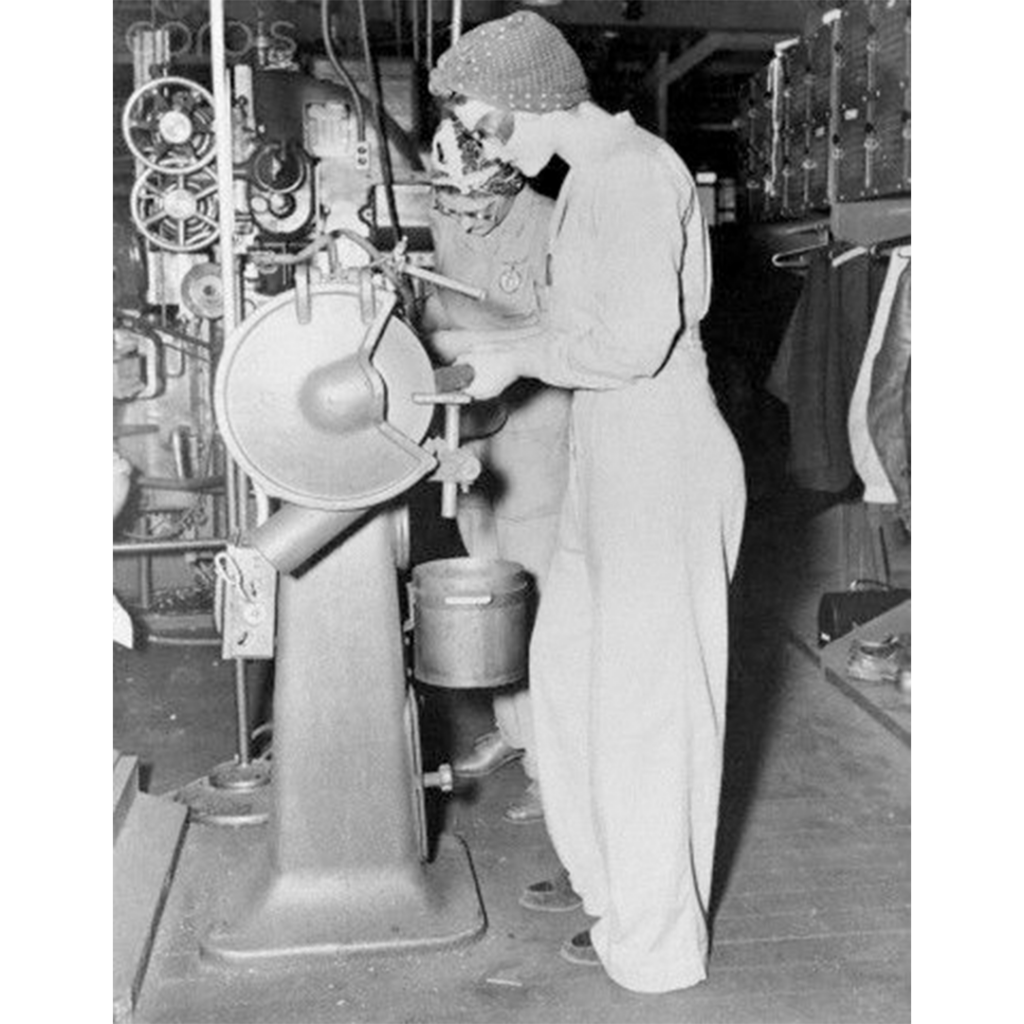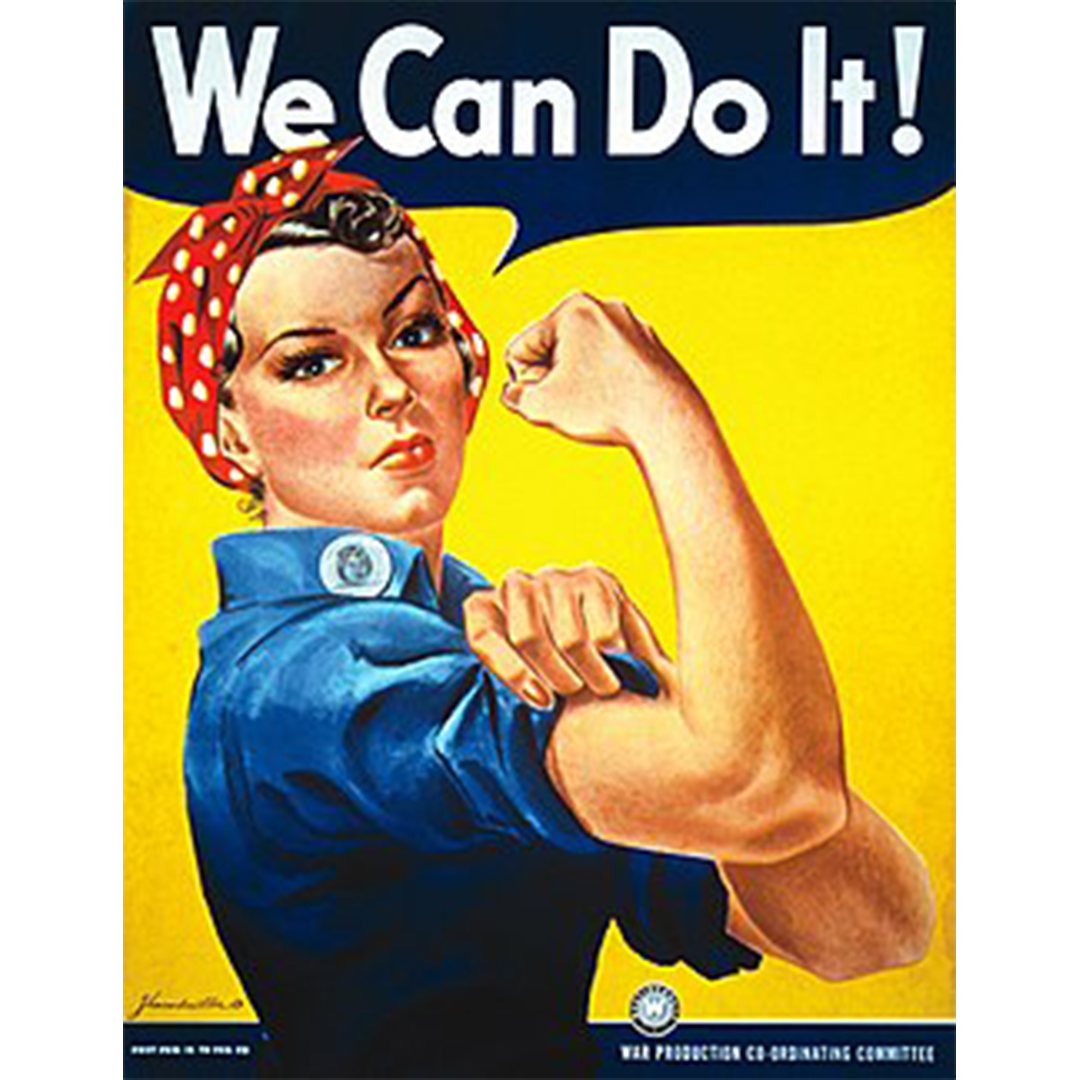In honor of the passing of Rosalind P. Walter, one of the original Rosie’s, we’re shining light on the famous face of Women Who Worked on the Home Front during World War II

Rosie the Riveter is the most iconic symbol of women’s empowerment. For over 75 years, the painting featuring a bandana clad woman with her sleeves rolled up, is the literal poster child for work in the trades industry. Many people know her face but did you know that most don’t know whose face it is?
The most popular reference of Rosie is in Rosie the Riveter, a song written by Redd Evans and John Jacob Loeb in 1943. Inspired by [1] “Rosalind P. Walter, a Long Island women who was a riveter on Corsair fighter planes,” the song tells the tale of a little girl who is [2] “making history, working for victory” and doing “more than a male will do.” Even though Rosalind sounds like the perfect inspiration for the poster, she is not the woman behind the famous face.
After the song’s release, Norman Rockwell, one of the nation’s most popular illustrators, drew a rendition of Rosie; however, his version was less feminine than the one we know today.

Using Mary Keefe, a Vermont woman, as his model, Rockwell portrayed Rosie as masculine with hefty arms and a large rivet gun. [2] “She’s big and dirty. She’s oversized, with working-class brawn. She has no wedding ring” and is wearing men’s clothes. Rockwell’s Rosie depicts masculinity as power while the Rosie we know depicts a strong, motivational woman.
But was that what she was meant for all along? Was Rosie designed as propaganda to draw women to the workforce while the men fought diligently during World War II?
The answer is no. In fact, the wartime industrial poster, painted by J. Howard Miller, was never meant for the entire nation to see. It [1] “displayed briefly in Westinghouse Electric Corporation Plants” and “was intended only to deter absenteeism and strikes among Westinghouse employees in wartime.”
Even though [3] “Rosie became one of the most successful recruitment tools in American history, and the most iconic image of working women in the World War II era”, the woman responsible for the movement was unidentified for nearly 75 years.
It took one man six years to uncover the real Rosie.
In 2010, Dr. James J. Kimble, [1] “an associate professor of communication and the arts at Seton Hall University in New Jersey” embarked on a quest to uncover the real Rosie. He landed first on [1] “Geraldine Doyle, who in 1942 worked briefly as a metal presser in a Michigan plant.” Doyle believed herself to be the woman in a newspaper photograph published the very same year she began work at the plant.

In all fairness, the picture is a profile of the woman’s face and it wouldn’t be shocking to find that many women believed it was them in the photo.

For years, Doyle was identified as Rosie so much so that it was mentioned in her 2010 obituary. Without any proof that Doyle was in fact the real Rosie, Dr. Kimble continued his search and came across [4] “a copy of the photograph with the original caption glued on the back. Dated March 1942 at the Naval Air Station in Alameda, it identified ‘Pretty Naomi Parker’ as the woman at the lathe.”
When Dr. Kimble met with Naomi Parker, now Naomi Parker Fraley, she wasn’t shocked by his findings. [4] “In 2011, at a reunion of female war workers, she saw the Acme photo of the woman at the lathe on display and recognized herself. Then she saw the caption, with Geraldine Hoff Doyle’s name and information. Fraley wrote to the National Park Service to correct the error, but got nowhere, even though she had kept a clipping of the photo from a 1942 paper with her name in the caption.”
In 2016, Dr. Kimble published an article, Rosie’s Secret Identity, detailing his search and the real Rosie was finally brought to light. Kimble says, [4] “I think the most important thing to her was her identity. When there’s a photo of you going around that people recognize, and yet somebody else’s name is below it, and you’re powerless to change that – that’s really going to affect you. The idea that this journal article, and the media picking it up and spreading the story, helped her regain her claim on that photo and her personal identity was really the big victory for her.”

After 75 years, we now know the face behind one of the most iconic women in the nation’s history. J. Howard Miller’s rendition of Fraley will forever be one of the best propaganda campaigns our nation will encounter. Rosie the Riveter not only motivated citizens to provide relief to the war effort and boosted the country’s morale during wartime but inspired future generations of women to accomplish whatever they set their minds to.
We can and we will do it!
References
[1] Fox, M. (2018). Naomi Parker Fraley, the Real Rosie the Riveter, Dies at 96. [New York Times Online Article]. Retrieved on 01/23/2018 from https://www.nytimes.com/2018/01/22/obituaries/naomi-parker-fraley-the-real-rosie-the-riveter-dies-at-96.html?hp&action=click&pgtype=Homepage&clickSource=story-heading&module=first-column-region®ion=top-news&WT.nav=top-news
[2] Harvey, S. (2010). Rosie the Riveter: Real Women Workers in World War II. [Library of Congress Online Article]. Retrieved on 01/23/2018 from https://www.loc.gov/rr/program/journey/rosie-transcript.html
[3] History Channel. (n.d.). Rosie the Riveter. [History Channel Online Article]. Retrieved on 01/23/2018 from http://www.history.com/topics/world-war-ii/rosie-the-riveter
[4] Pruitt, S. (2018). Uncovering the Secret Identity of Rosie the Riveter. [History Channel Online Article]. Retrieved on 01/30/2018 from http://www.history.com/news/rosie-the-riveter-inspiration




